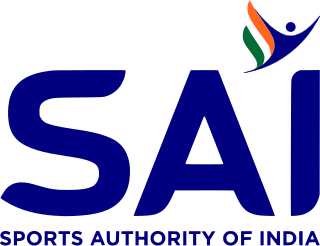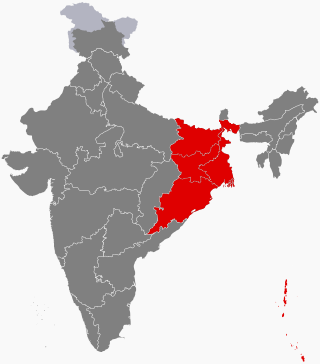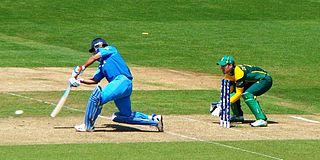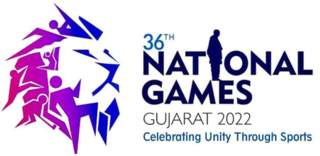
Jharkhand is a state in eastern India. The state shares its border with the states of West Bengal to the east, Chhattisgarh to the west, Uttar Pradesh to the northwest, Bihar to the north and Odisha to the south. It is the 15th largest state by area, and the 14th largest by population. Hindi is the official language of the state. The city of Ranchi is its capital and Dumka its sub-capital. The state is known for its waterfalls, hills and holy places; Baidyanath Dham, Parasnath, Dewri and Rajrappa are major religious sites.

Jamshedpur, also known as Tatanagar, is the largest and most populous city in Jharkhand and the first planned industrial city in India. It is a Notified Area Council and Municipal Corporation and also the headquarter of the East Singhbhum district. It is a popular tourist destination known for its forests, ancient temples and royal palaces. It was ranked as the cleanest city of India in the year 2019.

Ranchi is the capital of the Indian state of Jharkhand. Ranchi was the centre of the Jharkhand movement, which called for a separate state for the tribal regions of South Bihar, northern Odisha, western West Bengal and the eastern area of what is present-day Chhattisgarh. The Jharkhand state was formed on 15 November 2000 by carving out the Bihar divisions of Chota Nagpur and Santhal Parganas. Ranchi has been selected as one of the hundred Indian cities to be developed as a smart city under PM Narendra Modi's flagship Smart Cities Mission.

The Arjuna Award, officially known as Arjuna Awards given for Outstanding Performance in Sports and Games, is the second-highest sporting honour of India, the highest being the Major Dhyan Chand Khel Ratna Award. The award is named after Arjuna, one of the characters of the Sanskrit epic Mahabharata of ancient India. In Hinduism, he has been seen as a symbol of hard work, dedication and concentration. It is awarded annually by the Ministry of Youth Affairs and Sports. Before the introduction of the Major Dhyan Chand Khel Ratna in 1991–1992, the Arjuna award was the highest sporting honour of India. The nominations for the award are received from all government recognised National Sports Federations, the Indian Olympic Association, the Sports Authority of India (SAI), the Sports Promotion and Control Boards, the state and the union territory governments and the Major Dhyan Chandra Khel Ratna, Arjuna, Dhyan Chand and Dronacharya awardees of the previous years. The recipients are selected by a committee constituted by the Ministry and are honoured for their "good performance in the field of sports over a period of four years" at the international level and for having shown "qualities of leadership, sportsmanship and a sense of discipline." As of 2020, the award comprises "a bronze statuette of Arjuna, certificate, ceremonial dress, and a cash prize of ₹15 lakh (US$19,000)."
A demonstration sport, or exhibition sport, is a sport which is played to promote it, rather than as part of standard medal competition. This occurs commonly during the Olympic Games, but may also occur at other sporting events.

Arjun Munda is an Indian politician. He is the current Minister of Tribal Affairs and Minister of Agriculture and Farmers' Welfare in the Second Modi ministry. He is a member of the Bharatiya Janata Party. He was also Chief Minister of the Indian state of Jharkhand. He has also served as a member of parliament, having been elected to the 15th Lok Sabha from the Jamshedpur constituency in the 2009 parliamentary elections. The BJP's central leadership appointed him a National General Secretary of the party recognising his strong credentials as a popular mass leader and his significant contributions in strengthening the party in his state.

The Sports Authority of India (SAI) is the Apex National Sports Body of India, established in 1984 by the Ministry of Youth Affairs and Sports of the Government of India for the development of sport in India. SAI has 2 Sports Academic Institutions, 11 "SAI Regional Centres" (SRC), 14 "Centres of Excellence" (COE/COX), 56 "Sports Training Centres" (STC) and 20 Special Area Games (SAG). In addition, SAI also manages Netaji Subhash High Altitude Training Centre, as well as 5 stadiums in New Delhi, such as Jawaharlal Nehru Stadium, Indira Gandhi Arena, Major Dhyan Chand National Stadium, SPM Swimming Pool Complex and Dr. Karni Singh Shooting Range.

Giridih district is one of the twenty-four districts of Jharkhand state, India, and Giridih is the administrative headquarters of this district. As of 2011 it is the third most populous district of Jharkhand, after Ranchi and Dhanbad.

Eastern India is a region of India consisting of the Indian states of Bihar, Jharkhand, Odisha and West Bengal and also the union territory of the Andaman and Nicobar Islands. The region roughly corresponds to the historical region of Magadha from which it inherits its various Eastern Indo-Aryan languages.

Limba Ram is an Indian archer who represented India in international competitions, including three Olympics. He equalled an archery world record in 1992 at the Asian Archery Championships in Beijing. He was awarded the Padma Shri Award in 2012.

India has a history of sports dating back to the Vedic period. Cricket is the most popular spectator sport; it generates the highest television viewership, with the Indian Premier League (IPL) being the most-followed league in the country. Football has also gained popularity, with the Indian Super League (ISL) being the highest level of domestic football, and the national team winning multiple gold medals at the Asian and South Asian Games. Additional football accomplishments include India having reached the semifinal of the 1960 Olympics, qualified for the 1950 FIFA World Cup, and won the SAFF Championship. Other sports include kabaddi, badminton, tennis, and athletics, with kho-kho becoming the fourth-most viewed sport. India has also had success in field hockey, winning the World Cup and multiple medals in the Olympic Games. Sports such as golf, rugby, boxing, kickboxing, mixed martial arts, motorsport, wrestling, and basketball are featured throughout the country.

In India, a Community development block or simply Block is a sub-division of Tehsil, administratively earmarked for planning and development. In tribal areas, similar sub-divisions are called tribal development blocks. The area is administered by a Block Development Officer (BDO), supported by several technical specialists and village-level workers. A community development block covers several gram panchayats, the local administrative units at the village level.

Hemant Soren is an Indian politician from Jharkhand, who served as the 5th Chief Minister of Jharkhand from 2019 to 2024 and from 2013 to 2014. He is also the working president of the Jharkhand Mukti Morcha, a political party in Jharkhand. He represents Barhait constituency in the Jharkhand Legislative Assembly since 2014 and from Dumka from 2019 to 2020 and from 2009 to 2014. He was also the Deputy Chief Minister of Jharkhand from 2010 to 2013, leader of the opposition, Jharkhand Legislative Assembly from 2014 to 2019 and member of Rajya Sabha from Jharkhand from 2009 to 2010.

The 2011 National Games of India, also known as the 34th National Games of India and informally as Jharkhand 2011 was the 34th edition of National Games of India, held from 12 February 2011 to 26 February 2011 in Ranchi, Jharkhand, India Jamshedpur Dhanbad.

The Kalinga Stadium is a multi-purpose international sports complex in Bhubaneswar, Odisha, India. Its foundation stone was laid by the former chief minister of Odisha Biju Patnaik in 1978. It is best known as the home ground of the Indian Super League club Odisha FC since its inception in 2019. It was the home ground of the I-League club Indian Arrows from 2018 until 2022. It is situated in the heart of Bhubaneswar near Nayapalli area. It has facilities for athletics, football, field hockey, tennis, table tennis, basketball, volleyball, wall climbing and swimming. Other features of the stadium includes an 8-lane synthetic athletics track, high performance centres, and India's first Olympic standard pink and blue water-based AstroTurf.

Khelo India Youth Games (KIYG), are the annual national level multidisciplinary grassroot games in India held in January or February for two categories, namely under-17 years school students and under-21 college students. Every year best 1,000 kids will be given an annual scholarship of ₹5 lakh (US$6,300) for 8 years to prepare them for the international sporting events.

Khelo India University Game is a national level multi-sport event held in India, where athletes from universities across the country compete in different sports disciplines. The inaugural edition held in Odisha started on 22 February and concluded on 1 March 2020. It is organised by Sports Authority of India (SAI) and Ministry of Youth Affairs and Sports along with Association of Indian Universities, Indian Olympic Association and National Sports Federation. It is the largest university level sports competition in India.

Khelo India: National Programme for Development of Sports, branded as Khelo India, aims at improving India's sports culture at the grass-root level through organized talent identification, structured sporting competitions and infrastructure development. It is a Government of India programme launched in 2017-18 under the tenure Prime Minister Narendra Modi and Sports Ministers Vijay Goel and Rajyavardhan Singh Rathore. There has also been an emphasis on including traditional Indian games in Khelo India events in order to revive their popularity.
Biyyala Venkat Papa Rao is an Indian film maker, a sports administrator and a former member of the Indian Administrative Service (IAS). His documentary short-length film Willing to Sacrifice won the National Film Award for Best Non-Feature Environment/Conservation/Preservation Film.

The 2022 National Games of India, also known as the 36th National Games of India and informally as Gujarat 2022, was the 36th edition of the National Games of India and was held in Ahmedabad, Gandhinagar, Surat, Vadodara, Rajkot and Bhavnagar in the state of Gujarat between 29 September and 12 October 2022.
















